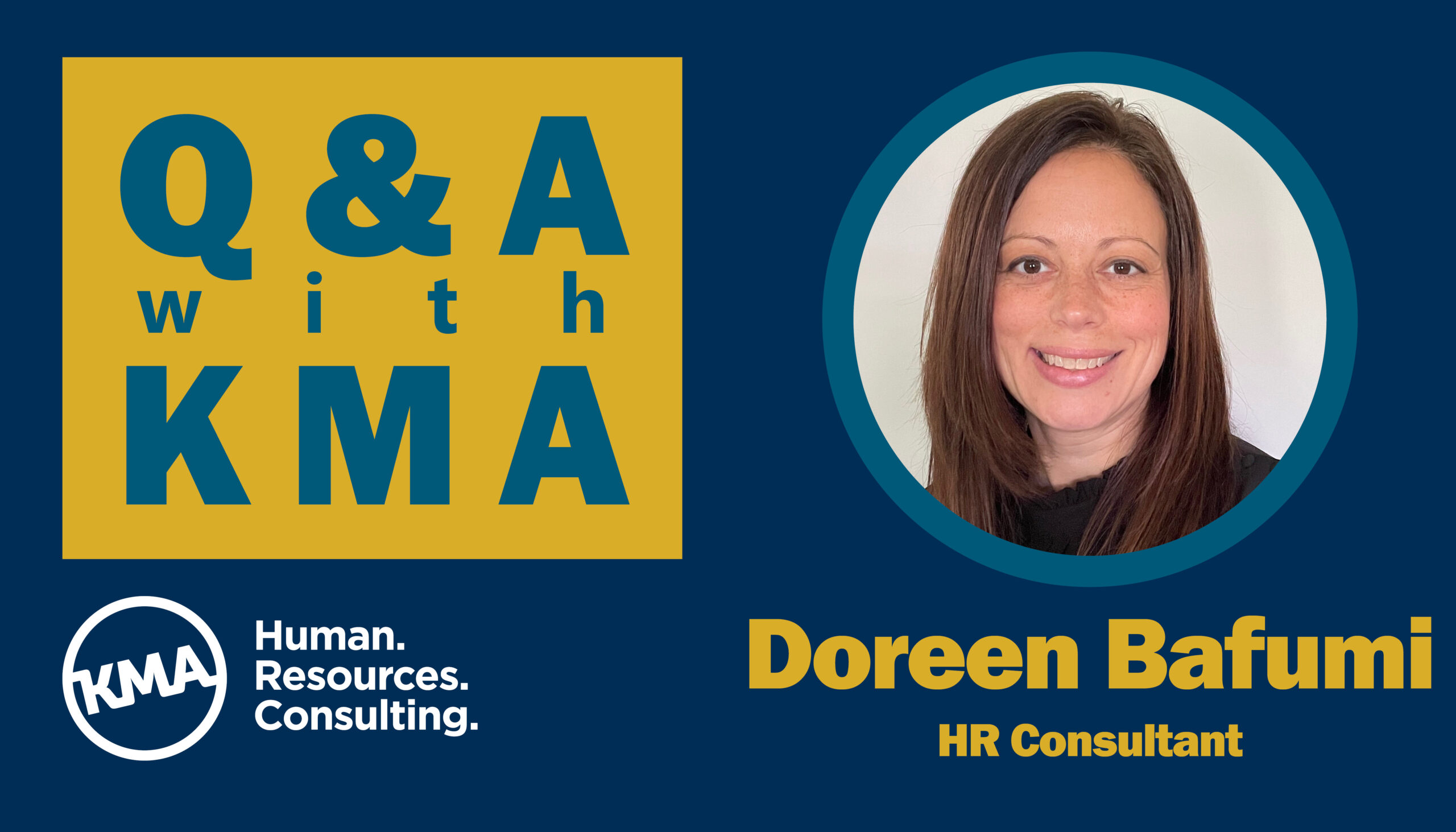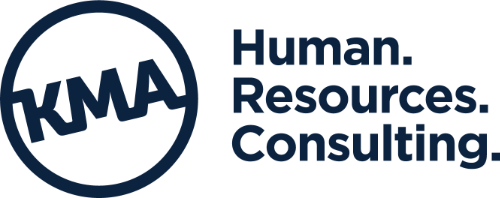 We recently talked with Doreen Bafumi, HR Consultant at KMA, to understand her approach to performance management, the 360-degree feedback process, employee relations and communication, and her many years of experience serving as an HR partner to her clients. Here is our conversation.
We recently talked with Doreen Bafumi, HR Consultant at KMA, to understand her approach to performance management, the 360-degree feedback process, employee relations and communication, and her many years of experience serving as an HR partner to her clients. Here is our conversation.
Q: You’ve worked extensively with performance management and 360-degree feedback processes. What are some best practices organizations should follow to ensure these tools drive real improvements?
Involve the employee in a collaborative approach and create a continuous performance management cycle, not a one-time event to check the box. Here are my key best practices:
- Gain employee input to their goals, performance, and areas for development to enhance their ownership and signal to them that their feedback matters.
- Provide ongoing feedback and coaching throughout the year, not just once a year during a performance review. Expressing thanks for completing a project, offering real-time feedback on successes and challenges, and asking employees: How can I help you? are all simple ongoing best practices.
- Structured check-ins throughout the year on how employees are progressing toward their goals (performance and/or developmental) is a more formalized best practice.
- Making time for a performance feedback meeting with your employee is key, ideally in person, or by a video call.
Q: What is your experience with the 360-degree feedback process?
A 360-degree feedback process, which is specifically for developing managers, offers a deeper level of feedback, however a solid performance management foundation is key before considering a 360-degree process. It should never be used or perceived as a punitive process by employees. Key best practices:
- Instrument design and process: Ensure that the 360 survey and process is anonymous, that questions are relevant to the role and its core competencies, and rating levels and descriptions are clear.
- Educate employees: Communicate the purpose of the 360 and why their voice is important, review the survey questions and the process, and educate employees on rater bias.
- Report review and development planning: Once the feedback report is generated, a collaborative discussion between the manager and their manager is important to identify priority areas and create a development plan. Enlisting an HR business partner, like KMA, to be part of this discussion as an impartial sounding board is also best practice!
- Close the loop with the team: To be very transparent, the manager can go a step further and share an overview of their results and their development plan with the team.
Q: How can companies effectively turn employee survey results into meaningful action plans that improve workplace culture and performance?
There are two key items that are very important to set the stage for action planning:
- Survey design and delivery. Only ask questions that you are open to taking action on. Keep the survey to a manageable length, and ensure it’s easily accessible for employees to complete anonymously.
- Communicate results. Building an effective communication plan to deliver the results of the survey to management and employees is a must before moving on to action planning. Employees want to see that their voice was heard, and that the survey wasn’t just a “check the box” exercise never designed to impact change.
Next steps once the survey results are communicated:
- Prioritize themes. What areas need to be focused on immediately? Prioritization should not just be a senior leadership or HR exercise, but is most effective when approached collaboratively by a key assortment of stakeholders (managers, supervisors, and employees).
- Empower employee ownership. Involving employees to solve workplace issues/processes enhances the probability of success. This increases their level of investment and frankly, they are likely the closest to the improvement opportunity anyway.
- Create actionable plans. Action plans that have clear statements of what needs to occur, who is going to do them, how it will happen, and expected completion dates will set the groundwork. Frequent check-ins and updates as to status of the action item is very important to keep everyone moving toward the goal.
- Measure outcomes. Did the plan work? Was there improvement? Measuring outcomes after the solution is in place, and developing actionable countermeasures to continuously improve, enhances workplace culture and performance.
Q: Building strong employee relations is crucial for retention and productivity. What are some key ways HR professionals can foster trust and open communication within an organization?
Listen, strengthen communication channels, and follow through. Employees want to see that they have someone that they can trust with issues and questions. Communication channels throughout the organization to leadership need to be clear. HR should monitor and inform managers when channels appear to be breaking down. Follow through on employee questions, ideas, suggestions, and issues is super important. And even though the follow through discussion may not always be what the employee wants to hear, knowing that they were listened to, acknowledged, their issue/feedback was considered, and they are provided the why, is key to fostering trust.
Q: Reflecting on your experience, what’s one key lesson or insight that has shaped the way you approach HR and people management?
A key lesson that I always keep in mind is to ensure that I address situations based on facts, policy, and process. With those pillars in mind, I work to ensure my decisions, and the guidance I provide clients, considers the management perspective while also championing the employee voice. This is a delicate balance that makes a successful human resources partner stand out from others in the field.
Thank you, Doreen!
